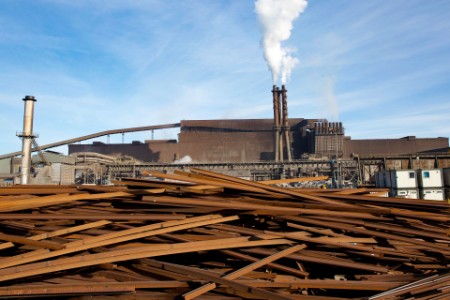
Can heavy industry be reshaped for a sustainable future?
A sense of history comes to the fore when reshaping a traditional organization like British Steel. Since its establishment 150 years ago, British Steel has been central to European and nationwide steel production and employment in the industry. By directly and indirectly supporting 23,000 jobs, the steel plant in Scunthorpe – one of the company’s main sites, with others across the UK, France and the Netherlands – has a vital role to play in the lives and wellbeing of those connected to it.
However, steel production in the UK has tumbled from its peak in the 1970s and commercial pressures have increased in recent years, threatening these jobs and the local economy. Greater supply internationally has pushed down prices, making higher cost operators less competitive in the global markets.
As a result, heavy industry organizations like British Steel are in a state of transition. If they are to survive, these companies – and by extension the local communities they support – must transform to recover their value.
In the case of British Steel, it had become clear in 2019 that its cashflow position was no longer viable – it could no longer afford to buy necessary materials or carbon credits from the EU to let it continue trading. It was in critical need of a buyer and a fresh, sustainable business model in order to avoid closure. According to Antonius Ron Deelen, CEO of British Steel, “The real reason that British Steel got into the situation we were in before EY joined was twofold: the cashflow of the company and bad messaging; people did not see the real situation British Steel was in and, therefore, were not prepared to take the measures needed.”
In May 2019, the British High Court granted an order to place British Steel into compulsory liquidation. The Official Receiver was appointed as liquidator and he concurrently petitioned the Court to appoint Sam Woodward, Alan Hudson and Hunter Kelly of EY to act as Special Managers to assist the Official Receiver with his duties as liquidator.
British Steel’s legacy and its multi-generational workforce, who were heavily invested in the plant and its survival, made this insolvency unique. “The number of people we came across as third-generation family employees was mind-blowing,” says Sam Woodward, EY-Parthenon Turnaround and Restructuring Strategy Partner. This feeling of personal significance is echoed by Paul McBean, Community Union and Multi-Union Chairman of British Steel who says of the Scunthorpe plant, “Closure would have been devastating. We have other businesses in town, but the vast majority of businesses here rely on the steel industry.”
Both the Official Receiver and EY were aware of the importance of British Steel to its employees, suppliers, customers, local communities and the wider economy. However, emotion could not overrule legislation and the Official Receiver and EY had a role to fulfil to meet statutory obligations. Working with multiple stakeholders, EY set about devising a strategy for the liquidation that included planning for wind down and closure while in parallel assessing the possibility of realizing value from a sale of the business, in whole or in part. The ultimate aim was securing the best possible outcome from liquidation, and while the chances of a going concern sale appeared remote, the counter factual to closure needing testing.
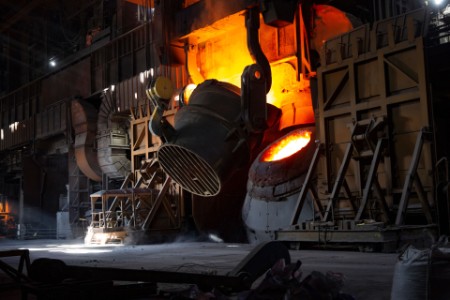
In an interconnected world, think both local and global
In the first instance, EY took control of the business. To do this, it quickly mobilized and physically integrated teams across all British Steel’s facilities in the UK, France and Netherlands. This provided EY with a greater understanding of how the plant worked, and what funding and other mechanisms were necessary to stabilize the business. “We had to deal with a Control of Major Accident Hazards (COMAH) top tier listed site that faced some real cash pressures, which had resulted in tons of hazardous waste remaining on site,” says Woodward. “This business could never be closed safely on an accelerated basis, in the same manner as a number of other industries. Control of the operations and a focus on health and safety and environmental matters was critical in either a closure or going concern scenario.”
Managing ongoing health and safety risks to ensure no fatalities or major injuries and no significant environmental incidents occurred was a top concern for the Official Receiver and the EY team. Keeping the blast furnaces operational was critically important in this regard. “I cannot over-emphasise the scale of the immediate work that was required to keep the blast furnaces operational and the whole plant safe in the first few days of the liquidation,” remarks Alex Williams, EY-Parthenon Associate Partner, Turnaround and Restructuring Strategy. Owing to its cash flow pressures, at the point of liquidation British Steel had a severe shortage of raw materials. The company only had 3 days’ worth of crucial supply, yet these materials were needed 24 hours a day, 365 days a year to maintain the high temperatures required to keep the furnaces operational.
As a result, the team’s first priorities on appointment were to immediately engage with a wide range of critical suppliers to rapidly unlock the supply chain and ensure that raw materials continued to flow to the business. This involved negotiating with both suppliers who had placed British steel on stop due to non-payment of previous supplies, plus new suppliers who were wary of dealing with a Liquidator and Special Managers. Hunter Kelly, EY-Parthenon Partner, Turnaround and Restructuring Strategy, commented that “this involved a herculean effort from a large and joint British Steel and EY team to rapidly reopen the supply chain with over 100 suppliers in those first 3 days.” Without this effort, not only could the ability to sell the business be lost, but the blast furnaces would not continue to operate, which could ultimately cause a terminal event on site.
Building consensus in challenging times
EY’s decision to base their team on-site provided the team with an opportunity to work closely and collaboratively with British Steel’s management and employees during the liquidation. The wider benefits of this transparent approach to communication quickly became apparent. “Together we started to produce a newsletter that went out to every employee. The engagement was so widespread that the Scunthorpe Evening Telegraph started printing them so more and more people were kept informed all the time,” says McBean.
In parallel to keeping British Steel running and commencing the complex planning for closure, EY started the global search for a buyer. However, finding the right fit was a complicated process that meant that a sale was never guaranteed.
Thinking global
Finding a buyer wasn’t just about finding someone willing to buy British Steel’s assets – it was about finding someone who could bring the resources, expertise and willpower to reshape legacy industrial operations in a way that would continue to deliver long-term value. Once a buyer was identified, the Official Receiver had to also be assured that there was a realistic prospect of a successful sale and that the sale would provide the best outcome for the liquidation. The road to the acquisition was a challenging one.
After reviewing a long list of over 100 potential buyers, the EY team believed they had found an ideal new owner for British Steel, but the deal fell apart due to geopolitical circumstances. This setback meant that by September 2019, time was running out for EY – and British Steel. “As we got into October, we were really starting to run out of time and options. The possibility of implementing the closure plans became a very real prospect” commented Alan Hudson, EY-Parthenon, Turnaround and Restructuring Strategy Leader. The closure planning required EY to reach across the globe to secure the specialist experience needed – this plant had never been closed down before and the health and safety risks of doing so were extensive.
However, the probability of closure subsided thanks to growing interest from the ultimate purchaser of British Steel, Jingye, a Chinese steel manufacturer. On top of EY-Parthenon - EYs teams focused on strategy consulting with precision knowledge and capabilities in restructuring and turnaround - the organization’s in-house global capabilities in M&A and tax, combined with a number of skilled, native Chinese speaking EY professionals who joined the project team on site, proved instrumental to closing the deal in November 2019. “Being able to speak directly to Jingye at a senior level was extremely important, both to build trust and also ensure that potential barriers to a sale were identified and dealt with quickly”, according to Woodward.

British Steel has plants across the UK and internationally. Its flagship Scunthorpe plant began life as an ironworks in the 19th century, and now covers more than 2,000 acres . The town grew up around it.

British Steel has plants across the UK and internationally
British Steel has plants across the UK and internationally. Its flagship Scunthorpe plant began life as an ironworks in the 19th century, and now covers more than 2,000 acres . The town grew up around it.
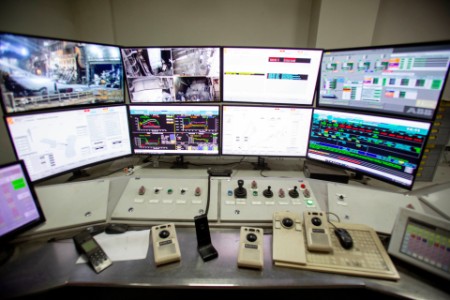
Steelmaking is a precision science
Steelmaking is a precision science, requiring every part of the production line to work in harmony.
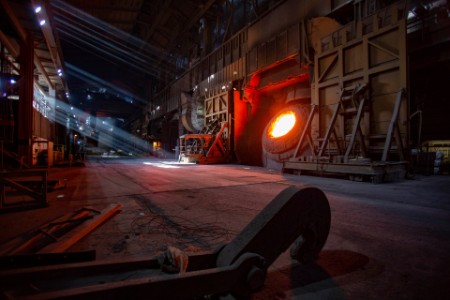
The blast furnaces
The blast furnaces are the heart of the steel production system. They have to maintain temperatures in excess of 1,100-2,000°C (2,010-3,630°F), 24 hours a day, 365 days a year.
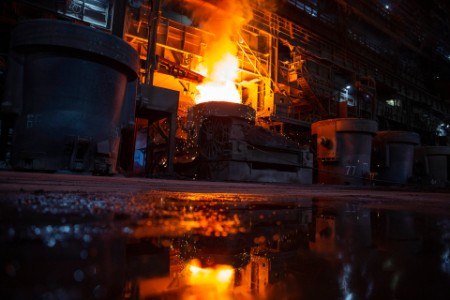
The steelmaking process
The team combines iron ore, scrap metal, coke and limestone in different quantities in the furnaces depending on the intended end use, with the initial process taking around 18 hours.

1,400 different types of steel
The Scunthorpe plant alone can make 1,400 different types of steel, but all start as white hot liquid in the blast furnaces before being transported to other parts of the site for production.

Steel for the construction industry
Steel cables are in high demand in the construction industry, with British Steel supplying companies around the world.

Steel for the railway industry
The plant also makes rails for the railway industry – rolled out in sheds over a mile long. British Steel produces the tracks for 95% of the British rail network.
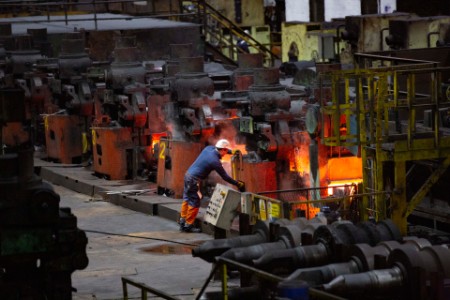
Experience of steel workers
The expertise and experience of the steel workers is key to ensuring defect-free production. Most of British Steel’s staff have worked for the company for well over a decade – and some for more than 40 years.
The art of deal-making
After Jingye signed the Asset Purchase Agreement (APA), on 10th November 2019, EY moved into completion mode. From there, it was a race against time to get the deal sorted. “We were then working through Christmas and into 2020 to get regulatory approvals. These were numerous and included those covering competition, environmental and health and safety aspects for both the UK and EU,” says Hunter Kelly.
Managing a wide-ranging group of stakeholders – creditors, suppliers, customers, government, trade bodies, unions and employees – and their needs, was one of the main complexities of this liquidation. Not only were the EY team responsible for managing a complex, global sales mandate; EY needed to align all stakeholders to ensure that British Steel continued to trade, prepare a transition plan so the business was ready when a deal completed, plus continue to refine contingency plans in case the sale fell through and a closure was still required. To successfully address the requirements of all stakeholders, EY set out to create a shared sense of purpose to ensure that everyone was moving in the same direction. “We were able to save jobs alongside a common purpose that people were able to pursue of, and ultimately achieve, an outcome that I'm incredibly proud of,” says Woodward.
The whole process took around 10 months – a remarkably quick turnaround – and concluded with the official sale of British Steel operations to Jingye on 9 March 2020 and the best outcome for the liquidation was achieved. The deal helped save thousands of direct jobs, in which complex contract terms and conditions important to the workforce were acknowledged and respected, plus tens of thousands in the wider supply chain ¬– and enabled British Steel to continue to evolve and transform to be fit for the future.

Forging a new chapter of British Steel
Jingye has announced plans to invest US$1.2 billion in the future of British Steel, offering a viable roadmap for a sustainable outlook, tomorrow and beyond. The survival of the 150-year-old company means the retention of jobs and the coming together of a traditional company with a much younger organization. Bringing both cultures together has given a fresh vision of how to improve British Steel to really create long-term value.
The EY-Parthenon and EY teams involved formed a broad, global collaboration of dedicated specialists providing cross-functional skills and experience to deliver the work. The Special Managers not only drew on knowledge from the EY M&A team to help assist with their global sales mandate, but also from transaction strategy, tax, forensics, HR and employee services, operations, IT and R&D specialists within the organization. “This work made me truly realize the collective power of our multi-disciplinary organization on a global level,” says Woodward. According to Deelen, “Finding a new buyer for the company is a difficult journey. EY was leading that whole process. You need a big partner like EY that has know-how and expertise of a lot of issues if you take over a company like British Steel, a multi-billion one. They had a very good dedicated team.”
This collaboration also extended from EY to all other stakeholders, with lasting effect. “The respect for each other will be there forever. I can honestly say it was a relationship, and I think if we hadn't worked so closely together, we mightn’t have achieved the outcome we have now,” says McBean.
And it’s this outcome that will transform the organization. “I think British Steel had to get rid of a lot of past history to prepare it to have a wonderful future with Jingye. We did that during the liquidation. I think it was the survival of an industry, which can go on at least for another 50 or 100 years,” says Deelen.
Above all, the survival of British Steel means the possibility of a long-term, sustainable future lies ahead with the traditions of the organization firmly embedded in tomorrow and beyond.
The team
Contact us
Like what you’ve seen? Get in touch to learn more.


